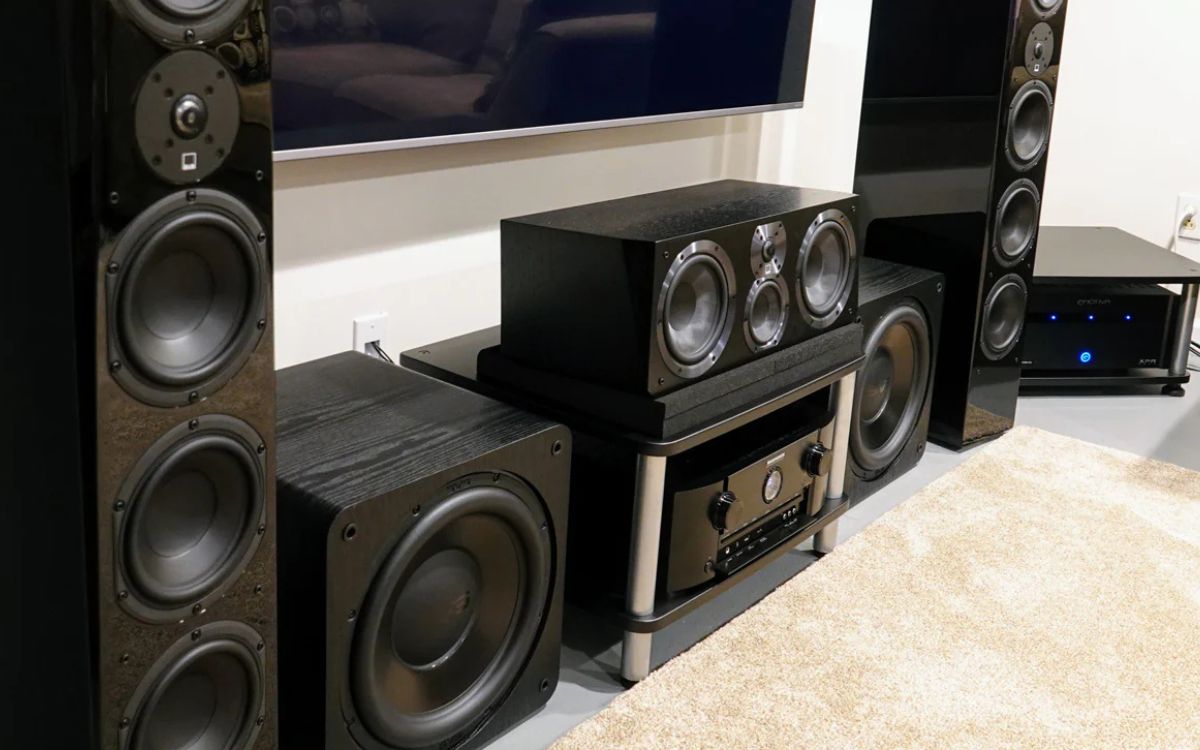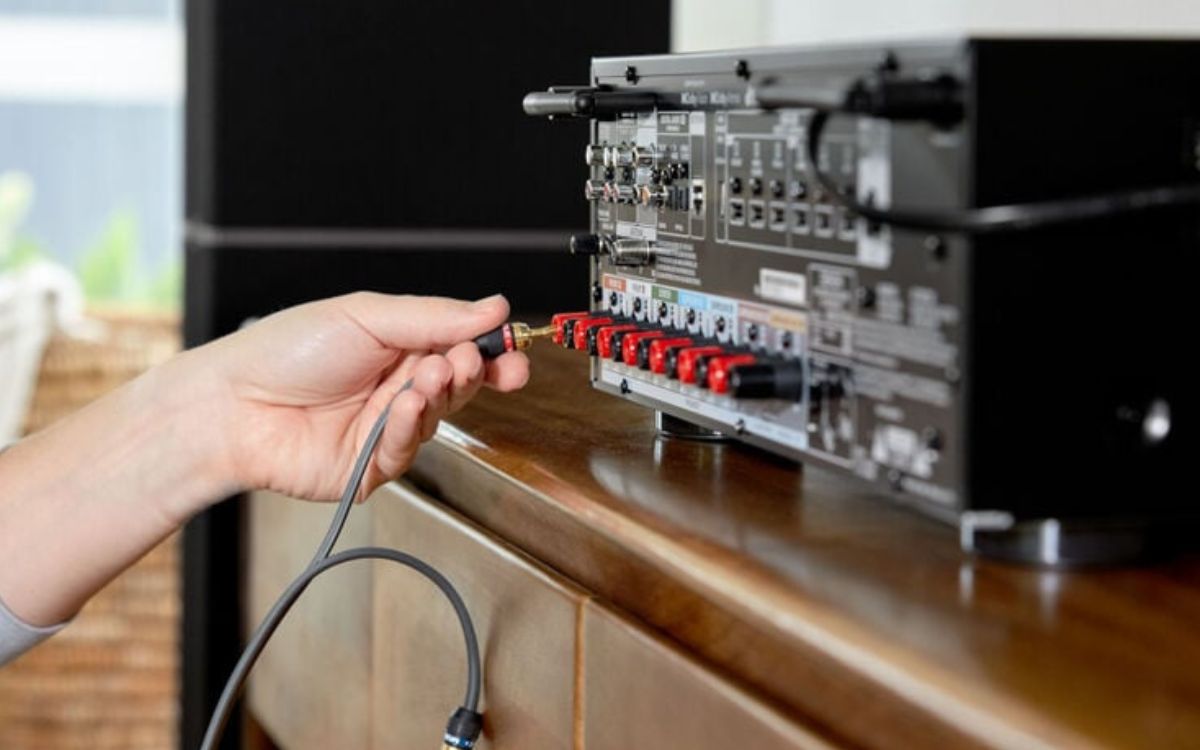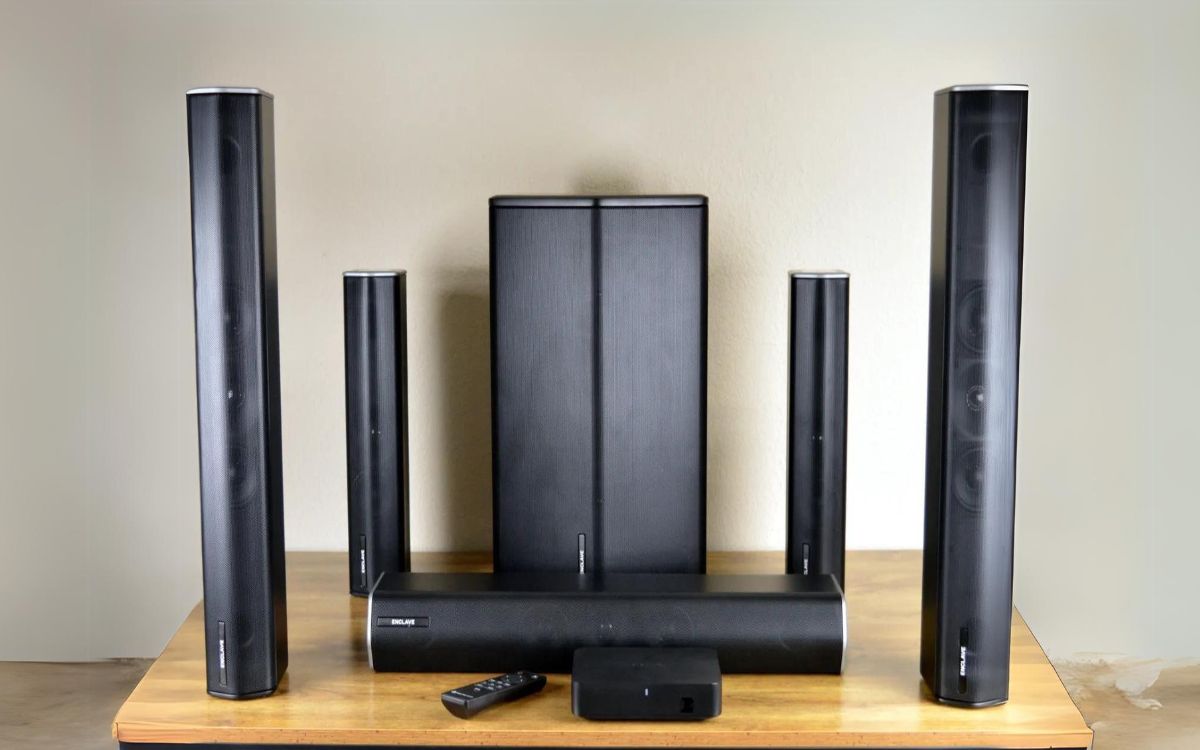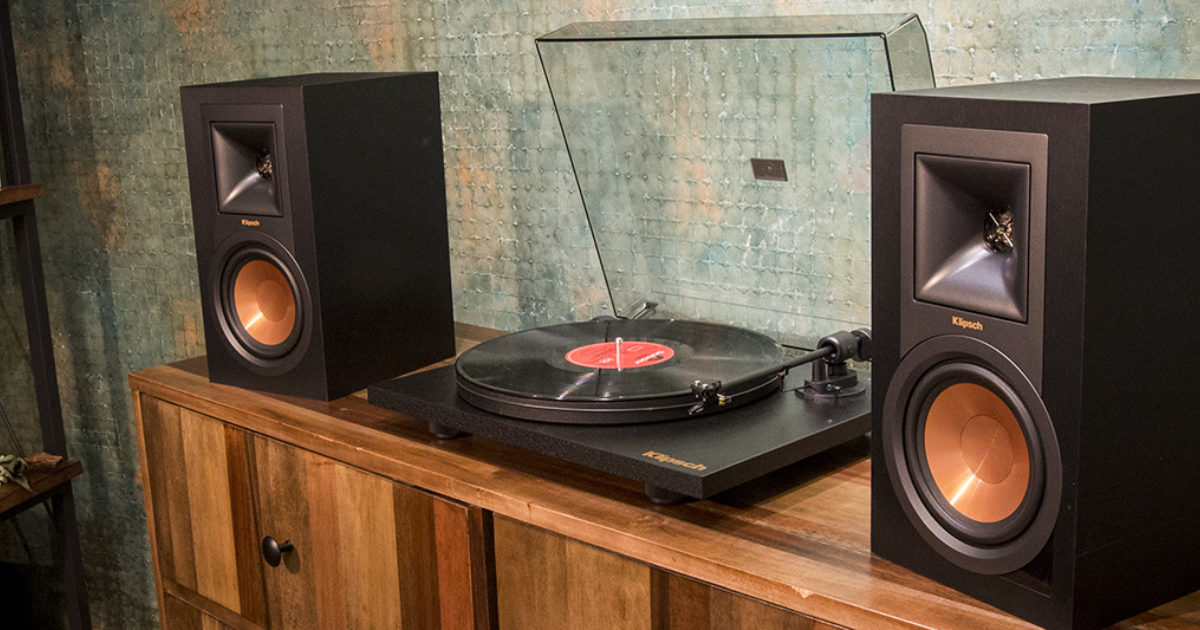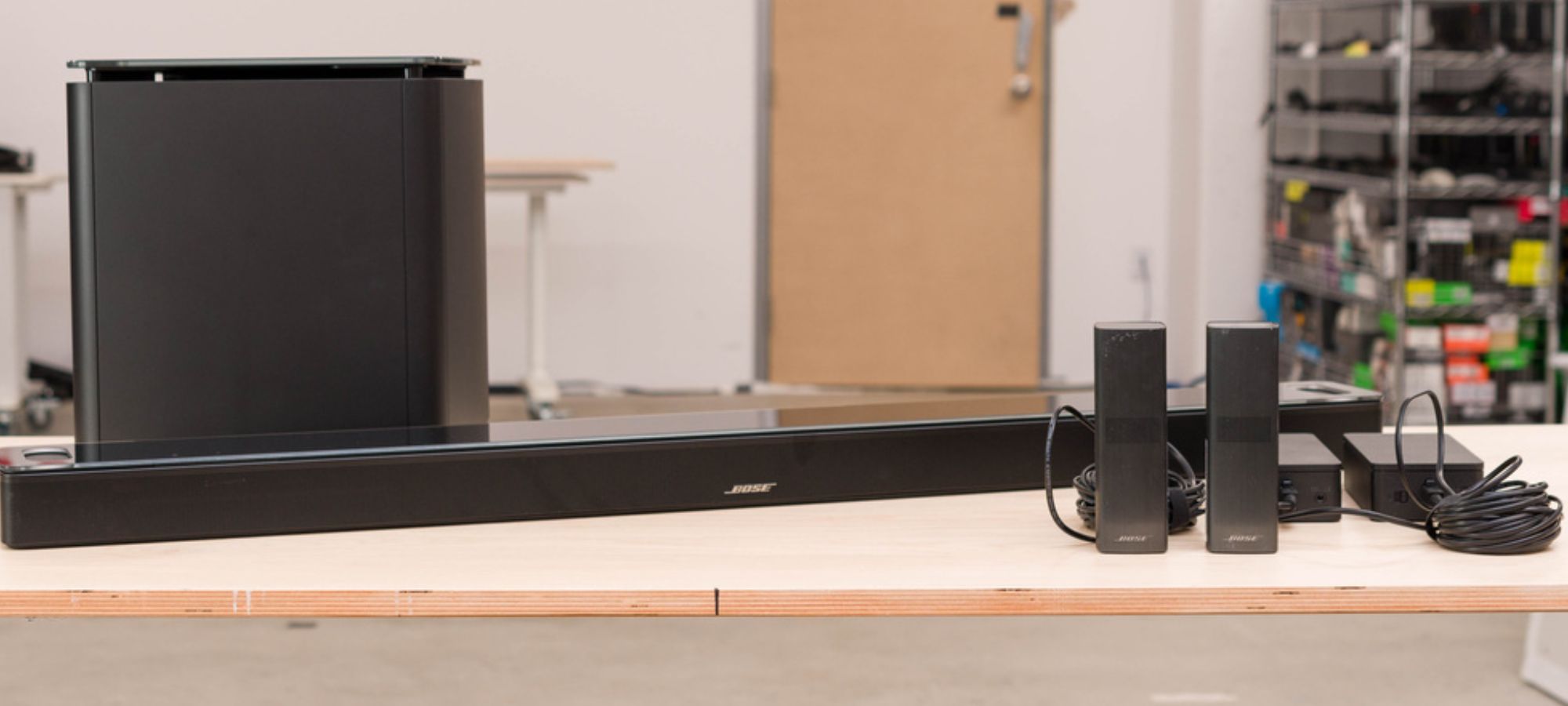Home>Production & Technology>Surround Sound>How To Make Wired Surround Sound Wireless
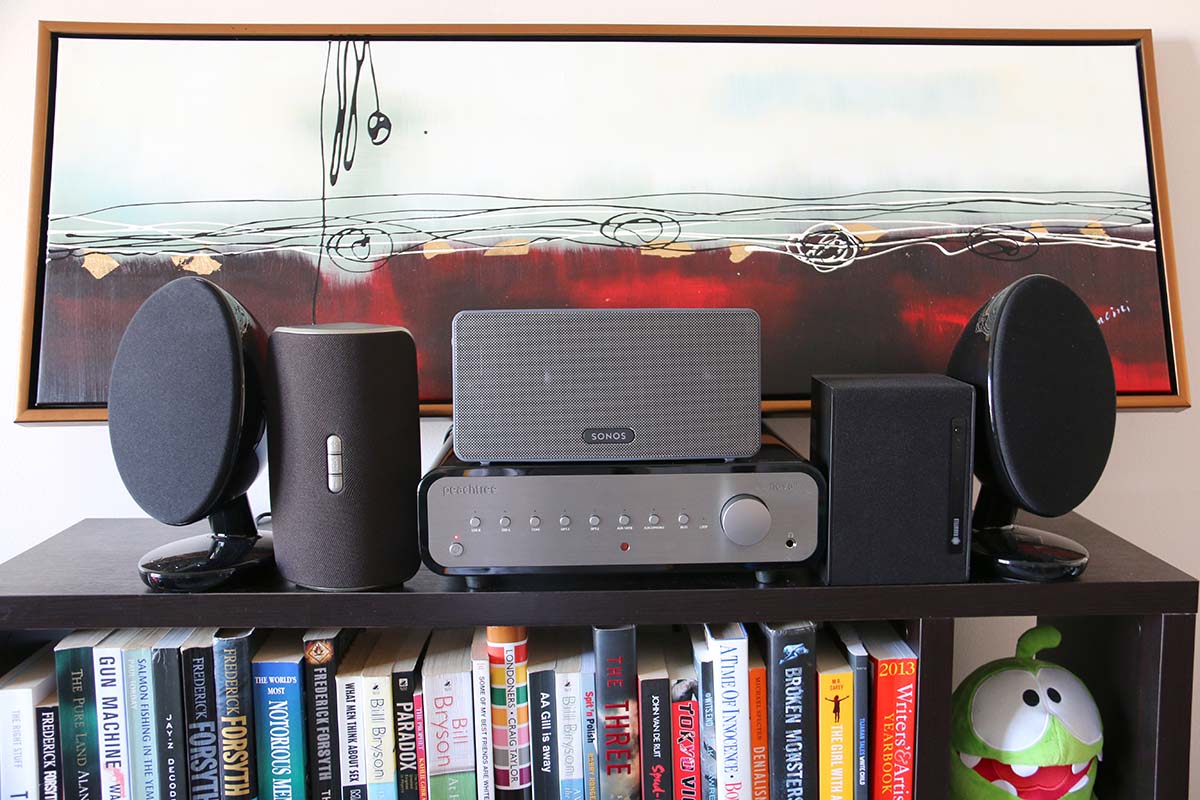

Surround Sound
How To Make Wired Surround Sound Wireless
Modified: January 22, 2024
Transform your wired surround sound system into a wireless one with our easy-to-follow guide. Enjoy hassle-free audio without compromising on quality.
(Many of the links in this article redirect to a specific reviewed product. Your purchase of these products through affiliate links helps to generate commission for AudioLover.com, at no extra cost. Learn more)
Table of Contents
- Introduction
- Benefits of Making Wired Surround Sound Wireless
- Methods for Making Wired Surround Sound Wireless
- Option 1: Wireless Transmitter and Receiver System
- Option 2: Bluetooth Audio Adapter
- Option 3: Wi-Fi Audio Streaming
- Option 4: Wireless Surround Sound Kit
- Considerations before Making the Conversion
- Conclusion
Introduction
Surround sound systems have revolutionized the way we experience audio, immersing us in a rich and dynamic sound environment. However, the hassle of dealing with tangled wires and limited placement options can be a major downside. That’s where making your wired surround sound system wireless comes in. By eliminating the need for physical connections, you can enjoy the benefits of surround sound without the limitations of cables.
In this article, we will explore the various methods available to make your wired surround sound wireless, discussing the pros and cons of each option. Whether you’re looking to upgrade your existing sound system or want to set up a wireless surround sound system from scratch, we’ve got you covered.
But why should you consider making the switch to wireless surround sound in the first place? Let’s take a look at some of the key benefits.
Improved Flexibility and Placement
One of the primary advantages of wireless surround sound is the flexibility it offers when it comes to speaker placement. Gone are the days when you had to position your speakers based on the length of the cables. With wireless technology, you can place your speakers wherever you desire, ensuring optimal sound distribution and creating a truly immersive audio experience.
Simplified Installation
Setting up a surround sound system can be a daunting task, especially when dealing with extensive cable management. With a wireless setup, the installation process becomes much simpler and less time-consuming. You can say goodbye to drilling holes, hiding wires, and dealing with complicated cable connections. Wireless systems typically require minimal setup, making it easier for anyone to enjoy high-quality surround sound.
Reduced Clutter
Let’s face it, cables can be a major eyesore, cluttering up your living space and creating a mess. By going wireless, you can eliminate cable clutter and achieve a cleaner and more organized entertainment area. Not only does this improve the aesthetics of your setup but also reduces the risk of tripping hazards.
Easy Expansion and Upgradability
Wireless surround sound systems offer the advantage of easy expansion and upgradability. With a wired system, adding additional speakers or upgrading components can be a cumbersome process. However, with wireless technology, you can seamlessly incorporate new speakers or replace existing ones without the need for extensive rewiring.
Now that you understand the benefits of making wired surround sound wireless, let’s explore the different methods available to achieve this conversion.
Benefits of Making Wired Surround Sound Wireless
Making your wired surround sound system wireless offers several advantages that can greatly enhance your audio experience. Let’s delve into the key benefits of going wireless:
Flexibility in Speaker Placement: When you have a wired surround sound system, your speaker placement is limited by the length of the cables. This can be frustrating, especially if you have a specific layout in mind for your audio setup. By going wireless, you can position your speakers anywhere in the room, allowing for optimal sound distribution and a more immersive listening experience.
Simplified Installation: Setting up a wired surround sound system can be labor-intensive, often involving drilling holes, running cables through walls, and meticulously concealing them. With a wireless setup, the installation process is significantly simplified. You can skip the hassle of hiding wires and enjoy a quick and straightforward installation without compromising on audio quality.
Enhanced Aesthetics: Wires can create a tangled mess and detract from the overall aesthetics of your entertainment area. By eliminating the need for cables, a wireless surround sound system provides a clean and streamlined look. You can enjoy a clutter-free setup that enhances the visual appeal of your space.
Convenience and Portability: With a wired setup, moving your speakers or rearranging your room becomes a cumbersome task. In contrast, wireless surround sound systems offer convenience and portability. You can easily relocate your speakers or change the layout of your room without the constraint of cables.
Expandability and Upgradability: Upgrading and expanding a wired surround sound system can be complicated and costly since it often requires additional wiring work. Wireless systems, on the other hand, make it easier to expand your setup or upgrade individual components. You can add more wireless speakers or swap out old ones with minimal effort.
Compatibility with Multiple Devices: Wireless surround sound systems often come equipped with various connectivity options, such as Bluetooth or Wi-Fi. This versatility allows for seamless integration with different devices like smartphones, tablets, laptops, and gaming consoles. You can easily stream audio from your favorite devices without the need for additional adapters or cables.
Elimination of Tripping Hazards: Wires snaking across the floor can pose a tripping hazard, especially in a darkened room. Going wireless eliminates this risk, creating a safer environment for you and your family.
In summary, transitioning from a wired surround sound system to a wireless setup offers numerous benefits, including increased flexibility in speaker placement, simplified installation, improved aesthetics, convenience and portability, ease of expandability and upgradability, compatibility with various devices, and enhanced safety. Now that you understand the advantages of going wireless, let’s explore the different methods available to make your wired surround sound system wireless.
Methods for Making Wired Surround Sound Wireless
There are several methods available to convert your wired surround sound system into a wireless setup. Each method has its own advantages and considerations, so you can choose the one that best suits your needs and preferences. Let’s explore these methods:
- Wireless Transmitter and Receiver System: This method involves using a wireless transmitter and receiver system specifically designed for audio. The transmitter connects to your audio source, such as a TV or AV receiver, while the receiver connects to your speakers. The transmitter sends the audio signal wirelessly to the receiver, eliminating the need for physical cables. Wireless transmitter and receiver systems provide reliable transmission with minimal latency, ensuring high-quality audio. This method works well for surround sound systems with multiple speakers and supports long-range transmission, making it suitable for larger rooms.
- Bluetooth Audio Adapter: Bluetooth audio adapters are a cost-effective and convenient option for making your wired surround sound wireless. These adapters connect to your audio source via Bluetooth and transmit the audio signal to Bluetooth-enabled speakers or a Bluetooth receiver connected to your wired speakers. Bluetooth technology provides a stable and wireless connection, allowing you to stream audio from various devices like smartphones, tablets, and laptops. However, it is important to note that Bluetooth audio may have limitations in terms of range and audio quality compared to other wireless methods.
- Wi-Fi Audio Streaming: Utilizing your home Wi-Fi network, Wi-Fi audio streaming allows you to send audio wirelessly from your audio source to compatible wireless speakers or receivers. This method offers excellent audio quality and greater range compared to Bluetooth. You can use multi-room audio systems that support Wi-Fi streaming, enabling you to have synchronized audio across multiple speakers in different rooms. Some popular Wi-Fi audio streaming technologies include Apple AirPlay, Google Chromecast, and Sonos.
- Wireless Surround Sound Kit: Wireless surround sound kits are specifically designed to make your entire surround sound system wireless. These kits consist of a wireless transmitter and multiple wireless receivers, allowing you to connect and transmit audio wirelessly to each speaker in your surround sound setup. Wireless surround sound kits are typically plug-and-play solutions and offer reliable transmission with low latency. They are a convenient option for those who want a hassle-free wireless conversion without the need for individual adapters or systems.
When deciding on the method to make your wired surround sound system wireless, consider factors such as the size of your room, the number of speakers, the desired audio quality, and the compatibility with your existing audio equipment. Additionally, ensure that the chosen method aligns with your budget and technical expertise.
Now that you are familiar with the different methods available, it’s important to consider a few key factors before making the conversion. We will discuss these considerations in the next section.
Option 1: Wireless Transmitter and Receiver System
A popular method for making your wired surround sound system wireless is by using a wireless transmitter and receiver system. This option allows you to maintain the integrity of your existing speakers while enjoying the convenience of a wireless setup.
The wireless transmitter and receiver system consists of two main components: the transmitter and the receiver. The transmitter connects to your audio source, such as a TV or AV receiver, via a wired connection, while the receiver connects to your speakers. The transmitter then wirelessly sends the audio signal to the receiver, eliminating the need for physical cables.
One of the significant advantages of using a wireless transmitter and receiver system is the reliable transmission it offers. These systems are specifically designed for audio and provide seamless transmission with minimal latency. This ensures that the audio quality remains intact and synchronous with your video content.
Furthermore, wireless transmitter and receiver systems support long-range transmission, making them suitable for larger rooms. You can position your speakers anywhere within the range of the transmitter, providing flexibility in speaker placement and optimal sound distribution.
The installation process for a wireless transmitter and receiver system is relatively straightforward. Simply connect the transmitter to your audio source, such as the audio output of your TV or AV receiver, using an RCA or optical cable. Connect the receiver to your speakers using speaker wire or RCA cables, depending on the compatibility of your speakers.
Before purchasing a wireless transmitter and receiver system, consider the specific features and capabilities you require. Some systems offer additional features like multiple channels, allowing you to connect and transmit audio to multiple speakers simultaneously. Others may have built-in amplifiers, eliminating the need for separate amplifiers for your speakers.
Additionally, it’s essential to ensure compatibility between your audio source and the wireless transmitter, as different audio outputs may require different types of connectors. Check the specifications of both your audio source and the wireless transmitter to ensure a seamless and compatible connection.
Overall, a wireless transmitter and receiver system is a reliable and versatile option for making your wired surround sound system wireless. It provides convenience, flexibility in speaker placement, and high-quality audio transmission. Consider your specific requirements and compare different wireless transmitter and receiver systems to find the one that best suits your needs.
Option 2: Bluetooth Audio Adapter
If you’re looking for a cost-effective and convenient method to make your wired surround sound system wireless, a Bluetooth audio adapter may be the perfect solution. Bluetooth adapters allow you to connect your audio source wirelessly to your speakers, eliminating the need for physical cables.
Bluetooth audio adapters work by pairing with your audio source, such as a smartphone, tablet, or laptop, via Bluetooth technology. Once connected, the adapter receives the audio signal and transmits it wirelessly to your speakers. This allows you to stream audio from your device directly to your surround sound system without the hassle of cables.
One of the advantages of using a Bluetooth audio adapter is its ease of installation. Simply plug the adapter into your audio source’s headphone jack or audio output, and it will automatically start pairing with the adapter. Once paired, you can start streaming audio instantly to your wired speakers.
Bluetooth technology has evolved over the years, offering improved audio quality and stable connections. However, it’s important to note that Bluetooth audio may have limitations compared to other wireless methods. The range of Bluetooth can be limited, especially in environments with multiple obstacles or interference. Additionally, you may experience a small amount of audio latency, which can be noticeable when watching videos or playing games.
When choosing a Bluetooth audio adapter, consider the range and signal strength it offers. Some adapters have a longer range than others, allowing you to have more flexibility in speaker placement. Additionally, look for adapters that support the latest Bluetooth version, as newer versions provide better audio quality and more stable connections.
Bluetooth audio adapters are compatible with various devices, making them a versatile option for wireless audio streaming. You can easily connect your smartphone, tablet, or laptop and stream music, podcasts, or videos directly to your surround sound system. Some adapters even support multiple device connections, allowing you to switch between different audio sources without re-pairing.
Overall, a Bluetooth audio adapter provides a convenient and budget-friendly way to make your wired surround sound system wireless. It allows you to enjoy wireless audio streaming from multiple devices while maintaining compatibility with your existing speakers. Consider your range requirements, audio quality preferences, and connectivity options when choosing a Bluetooth audio adapter that best suits your needs.
Option 3: Wi-Fi Audio Streaming
If you’re looking for a versatile and high-quality wireless solution for your wired surround sound system, Wi-Fi audio streaming is an excellent option to consider. It allows you to transmit audio wirelessly from your audio source to compatible wireless speakers or receivers using your home Wi-Fi network.
Wi-Fi audio streaming offers superior audio quality compared to Bluetooth, as it supports lossless audio codecs like FLAC and ALAC. This means that you can enjoy your music, movies, and games with the highest fidelity and accuracy possible. Additionally, Wi-Fi streaming typically has a greater range than Bluetooth, allowing you to place your speakers further apart without compromising signal quality.
One of the advantages of Wi-Fi audio streaming is the ability to have synchronized audio across multiple speakers. With multi-room audio systems that support Wi-Fi streaming, you can have the same audio playing simultaneously in different rooms or have each room play different audio sources. This makes Wi-Fi streaming ideal for whole-home audio setups or multi-zone entertainment systems.
There are several Wi-Fi audio streaming platforms and technologies available, each with its own features and compatibility. Some popular options include Apple AirPlay, Google Chromecast, and Sonos. These platforms allow you to stream audio from your compatible devices, such as smartphones, tablets, or computers, to wireless speakers or receivers that support the respective technology.
To set up Wi-Fi audio streaming, you will need compatible wireless speakers or a Wi-Fi receiver that can be connected to your existing wired speakers. These devices will connect to your home Wi-Fi network, allowing you to stream audio from your devices directly to your surround sound system. Some Wi-Fi audio streaming systems offer dedicated apps for easy control and management of your audio sources and speakers.
When considering Wi-Fi audio streaming, ensure that the wireless speakers or receivers you choose are compatible with the specific Wi-Fi streaming technology you want to use. This will ensure seamless and reliable connectivity. It’s also important to ensure that your home Wi-Fi network is robust enough to handle the audio streaming requirements, especially if you plan to stream high-definition audio files.
Overall, Wi-Fi audio streaming offers a versatile and high-quality wireless solution for your wired surround sound system. It allows you to enjoy lossless audio streaming, synchronized multi-room audio, and compatibility with various devices. Consider the specific Wi-Fi streaming platform that aligns with your needs and explore the wide range of compatible speakers and receivers available in the market.
Option 4: Wireless Surround Sound Kit
If you prefer a hassle-free and all-in-one solution to make your wired surround sound system wireless, a wireless surround sound kit is an excellent option to consider. These kits are specifically designed to convert your entire surround sound system into a wireless setup.
A wireless surround sound kit typically consists of a wireless transmitter and multiple wireless receivers. The transmitter connects to your audio source, such as a TV or AV receiver, using a wired connection, while the wireless receivers connect to each of your speakers. The transmitter wirelessly sends the audio signal to the receivers, eliminating the need for individual speaker cables.
One of the significant advantages of using a wireless surround sound kit is the convenience it offers. These kits are designed for plug-and-play operation, making the installation process quick and straightforward. You simply connect the transmitter to your audio source and the receivers to your speakers, and they will automatically pair and start transmitting audio.
Wireless surround sound kits provide reliable transmission with low latency, ensuring that the audio remains synchronized with your video content. They are specifically engineered to deliver high-quality audio, maintaining the integrity and detail of your surround sound experience.
These kits are also expandable, allowing you to add more wireless speakers to your setup if desired. Some kits even offer the flexibility to support additional wireless receivers, giving you the option to incorporate more speakers or expand your system to support multi-room audio.
When considering a wireless surround sound kit, it’s essential to evaluate the range and signal strength it offers. Ensure that the wireless kit can cover the distance between your audio source and speakers without signal dropouts or quality degradation. Additionally, check for any compatibility requirements to ensure that the kit is compatible with your specific audio source and speakers.
Wireless surround sound kits are an excellent option for those who want a complete and hassle-free solution to make their wired surround sound system wireless. They provide convenience, reliability, and expandability, allowing you to enjoy the benefits of a wireless setup without the need for complex installations or multiple adapters.
Consider your specific requirements, the number of speakers in your surround sound system, and the desired range when selecting a wireless surround sound kit. Explore the options available in the market and choose a kit that best matches your needs and budget.
Considerations before Making the Conversion
Before making the conversion from a wired surround sound system to a wireless setup, there are several important considerations to keep in mind. These factors will help ensure a successful and satisfactory transition:
Audio Quality: While wireless technology has improved significantly, it’s important to note that there may be a slight compromise in audio quality compared to a wired setup. Consider your preferences and expectations regarding audio fidelity and ensure that the chosen wireless method meets your desired standards.
Range and Signal Coverage: Different wireless methods have varying ranges and signal coverage capabilities. Evaluate the size of your room and the intended speaker placement to ensure that the chosen wireless method can effectively cover the range needed to transmit the audio signal without interference or signal dropouts.
Compatibility: Ensure that the chosen wireless method is compatible with your existing audio equipment. Check the connectivity options and requirements of your audio source, speakers, and any additional devices or adapters needed for the wireless conversion. Compatibility is crucial to guarantee seamless operation and optimal performance.
Latency: Latency refers to the delay between the audio signal being transmitted and reaching the speakers. Depending on the wireless method used, there may be a slight delay in sound delivery. Consider the impact of latency on your audio and visual experience, especially when watching movies or playing video games where audio synchronization is essential.
Interference and Obstacles: Wireless signals can be susceptible to interference from other devices or obstacles such as walls, furniture, or electronic equipment. Evaluate the layout of your room and consider any potential sources of interference that could affect the wireless signal. This will help you choose the wireless method that best handles potential obstacles in your environment.
Budget and Affordability: Wireless conversions come with different price ranges. Set a budget and consider the cost of the wireless method, any additional devices or adapters required, and the potential need for multiple units or speakers if expanding the setup. Assess the affordability of the chosen wireless solution while keeping in mind the desired audio quality and performance.
Ease of Use: Consider your technical expertise and comfort level with setting up and troubleshooting a wireless system. Some methods may require more technical knowledge and setup time, while others offer a plug-and-play experience. Choose a wireless method that aligns with your comfort level and ensures a user-friendly experience.
Taking these considerations into account before making the conversion will help you make an informed decision and ensure a successful transition to a wireless surround sound system. Evaluate your priorities and preferences, and choose the wireless method that best meets your needs in terms of audio quality, range, compatibility, and ease of use.
Conclusion
Transitioning from a wired surround sound system to a wireless setup can greatly enhance your audio experience, providing flexibility, convenience, and improved aesthetics. By eliminating the constraints of cables, you can enjoy the benefits of surround sound without compromising on placement options or dealing with cable management.
In this article, we explored various methods for making your wired surround sound system wireless. We discussed options such as wireless transmitter and receiver systems, Bluetooth audio adapters, Wi-Fi audio streaming, and wireless surround sound kits. Each method offers its own advantages and considerations, allowing you to choose the one that best suits your needs, budget, and technical expertise.
We also highlighted the benefits of going wireless, including improved flexibility in speaker placement, simplified installation, reduced clutter, easy expandability and upgradability, compatibility with multiple devices, and the elimination of tripping hazards. These advantages contribute to creating a more immersive and enjoyable audio experience.
Before making the conversion, it’s important to consider factors such as audio quality, range, compatibility, latency, interference, budget, and ease of use. These considerations will help ensure a successful transition and enable you to choose the wireless method that best aligns with your specific requirements.
In conclusion, making your wired surround sound system wireless opens up a world of possibilities, allowing you to enjoy high-quality audio without the limitations of cables. Whether you opt for a wireless transmitter and receiver system, a Bluetooth audio adapter, Wi-Fi audio streaming, or a wireless surround sound kit, the choice is yours. Explore the different methods, weigh the advantages and considerations, and embark on a wireless surround sound journey that enhances your audio experience and transforms your entertainment area.

